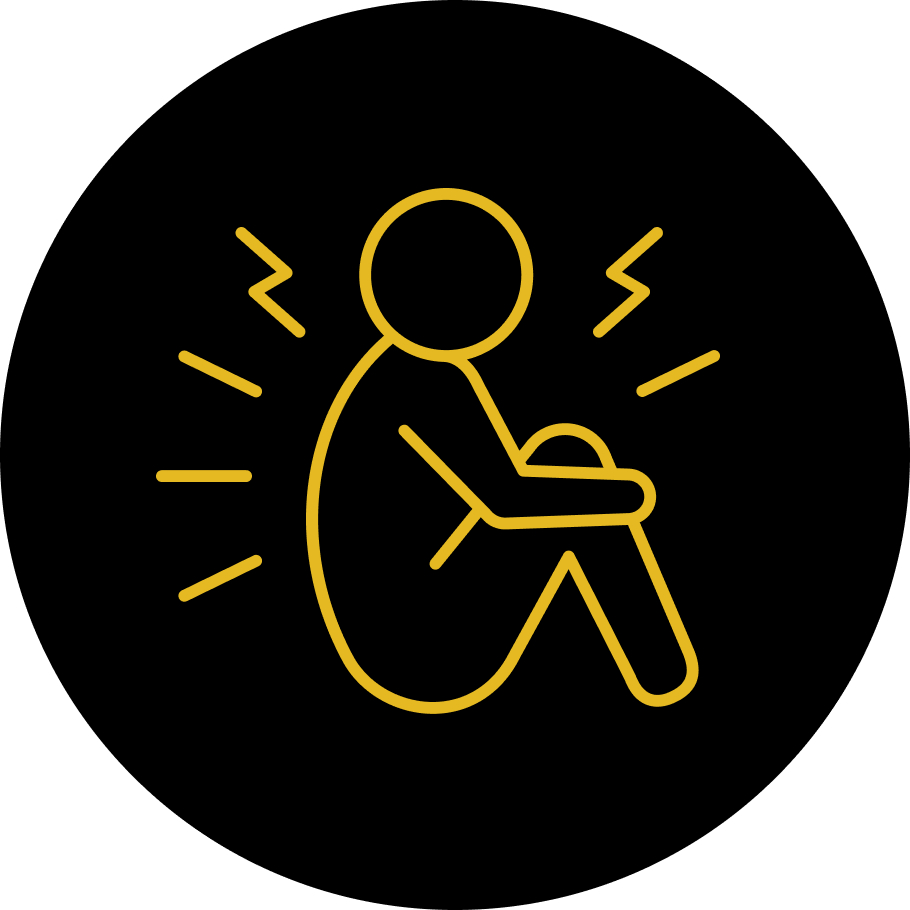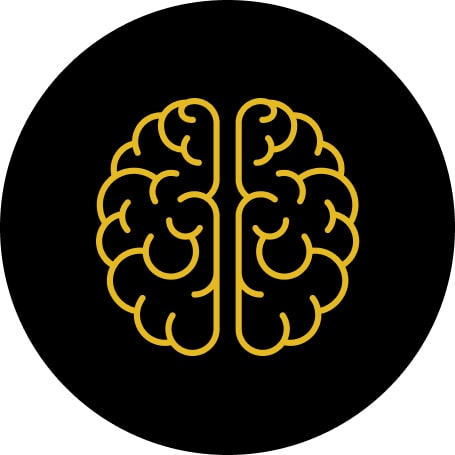Research & Publications
The Therapeutic Market Behind MIRA-55
MIRA-55 enhances the therapeutic potential for treating anxiety and cognitive impairment by striking a balance between the beneficial effects of tetrahydrocannabinol (THC) and cannabidiol (CBD) by targeting the cannabinoid receptors CB1 and CB2. MIRA-55 has potent anti-anxiety effects without any symptoms of sedation or intoxication.

Anxiety Disorder
- Anxiety disorders are chronic conditions marked by an excessive and persistent sense of apprehension, with physical symptoms such as sweating, palpitations and feelings of stress.
- Over 40 million US adults have an anxiety disorder2, including phobias, social anxiety disorder, post-traumatic stress disorder (PTSD), generalized anxiety disorder (GAD) and panic disorder.3
- Standard treatment leverages cognitive-behavioral therapy, though pharmacological options include: SSRIs, SNRIs, and TCAs4.

Cognitive Impairment
- Cognitive Impairment encompasses conditions marked by notable decline in one’s cognitive abilities, which can interfere with daily activities. Cognitive impairments can include conditions like Alzheimer’s disease, dementia, mild cognitive impairment (MCI), and other related diseases.
- Approximately 16 million people in the US are living with cognitive impairment, including more than 6 million diagnosed with Alzheimer’s disease.
- Current treatments for cognitive impairment, particularly Alzheimer’s, are palliative rather than curative, only able to alleviate symptoms instead of stopping or reversing the disease progression.
- The North America Alzheimer’s drugs market alone is projected to reach around $13 billion by 2030. However, this figure could grow significantly if more effective treatments become available.
- Hecke, et al. Neuropathic pain in the general population: A systematic review of epidemiological studies. Pain. 2014 Apr;155(4):654-662. doi: 10.1016/j.pain.2013.11.013.
- Anxiety Disorders | NAMI: National Alliance on Mental Illness
- Anxiety Disorders Facts and Statistics | The Recovery Village Drug and Alcohol Rehab
- SSRIs – Selective serotonin reuptake inhibitor; SNRIs – Serotonin–norepinephrine reuptake inhibitor, TCAs – Tricyclic antidepressants
Our Research Methods Behind MIRA-55 Effectiveness
Explanation of Elevated Plus Maze
The Elevated Plus Maze (EPM) is a widely used preclinical behavioral assay for rodents and it has been validated to assess the anti-anxiety effects of pharmacological agents.
The EPM is a test measuring anxiety in rodents as a screening test for putative anxiolytic compounds and a general research tool in neurobiological anxiety research such as GAD or PTSD. The model is based on the test animal’s aversion to open spaces in the maze’s open arms.
Anti-anxiety effects of test agents are demonstrated by an increase in the percentage of time spent in the open arm with treatment compared to placebo. The total distance traveled is a measure of the overall level of arousal and mobility of the mice undergoing testing on the EPM, and is used to rule out any sedating or intoxicating effects of the test agent.
Explanation of Hot Plate Test
A number of clinically approved pharmacological agents to treat pain have been demonstrated to delay the onset of heat sensitivity upon paw exposure in mice to heat including opioids.
Anti-anxiety Effects of MIRA-55
We tested MIRA-55 for its anti-anxiety effects in the EPM and found that, at the doses tested, our agent has potent anti-anxiety effects without any symptoms of sedation or intoxication. MIRA-55 demonstrated anti-anxiety effects in the preclinical model using the EPM.
Method
We studied the effect of acute administration of MIRA-55 on anxiety-related phenotypes in mice to model human conditions. An intraperitoneal (i.p.) injection of vehicle (saline + 1%DMSO) or MIRA-55 (0 mg/kg = Placebo [PBO] vs 50mg/kg = Treatment) was administered to 8 -12-week-old C57Bl/6 mice (n=5/group). Thirty minutes following injection, mice were tested in anxiety-related measures using the EPM.
Pain Reduction Effects of MIRA-55
The hot plate test demonstrates the pain-relieving potential of MIRA-55. MIRA-55 statistically, significantly and dramatically increased the time it took mice to lift their legs, indicating its effectiveness as a potential treatment for pain in this model.
Method
Thirty minutes after treatment with either vehicle or MIRA-55, mice were placed on a heated plate to measure the time it took for the mouse to lift its paw in response to the mild pain it felt. Mice treated with drugs that alleviate pain significantly increase the time it takes for the mouse to become bothered by the heat and lift its leg.
CB1 and CB2 Receptor Binding
This chart demonstrates that MIRA-55 has less potency at CB1, but maintains high binding at CB2. Since CB1 corresponds to intoxication, it is believed that MIRA-55 will be less intoxicating while still providing positive effects.
THC vs MIRA-55
Initial research shows that MIRA-55 is differentiated from THC in that it lowers anxiety at high dose versus THC…(1 of 2)
THC has Biphasic Effects:
Agonist at Low Doses (anti-anxiety) and Antagonist at High Doses (pro-anxiety). MIRA-55 is a Monophasic Partial Agonist. That allows us to conclude that:
- Predict MIRA-55 will have only Anti-Anxiety Effects with little to no Pro-Anxiety Side Effects seen with THC.

Minimizing Negative Side Effects
Based on dose response model, we anticipate that MIRA-55 minimizes negative side effects seen with THC (e.g. Anxiety/Paranoia)
Superior CB2 Agonist Activity
MIRA-55 delivers superior CB2 Agonist activity / receptor activation as measured by intracellular cAMP effects
MIRA-55: Agonist Receptor Effects Model
Cognition in Mouse Model of Fear Conditioning
Pre-Clinical Research:
Cognition Improvement
MIRA-55 does not have Cognitive Impairing effects compared to THC in the rat PVT
Cognitive Impairment from THC
Because marijuana impairs short-term memory and judgment and distorts perception, it can impair performance in school or at work and make it dangerous to drive.
Research has shown that marijuana’s negative effects on attention, memory, and learning can last for days or weeks after the acute effects of the drug wear off, depending on the person’s history with the drug.
Some studies have also linked marijuana use to declines in IQ, especially when use starts in adolescence and leads to persistent cannabis use disorder into adulthood.
Source: Davis et al, Journal of Neuroscience Methods. V. 259, 1
February 2016, Pages 57-71, Mira Analysis